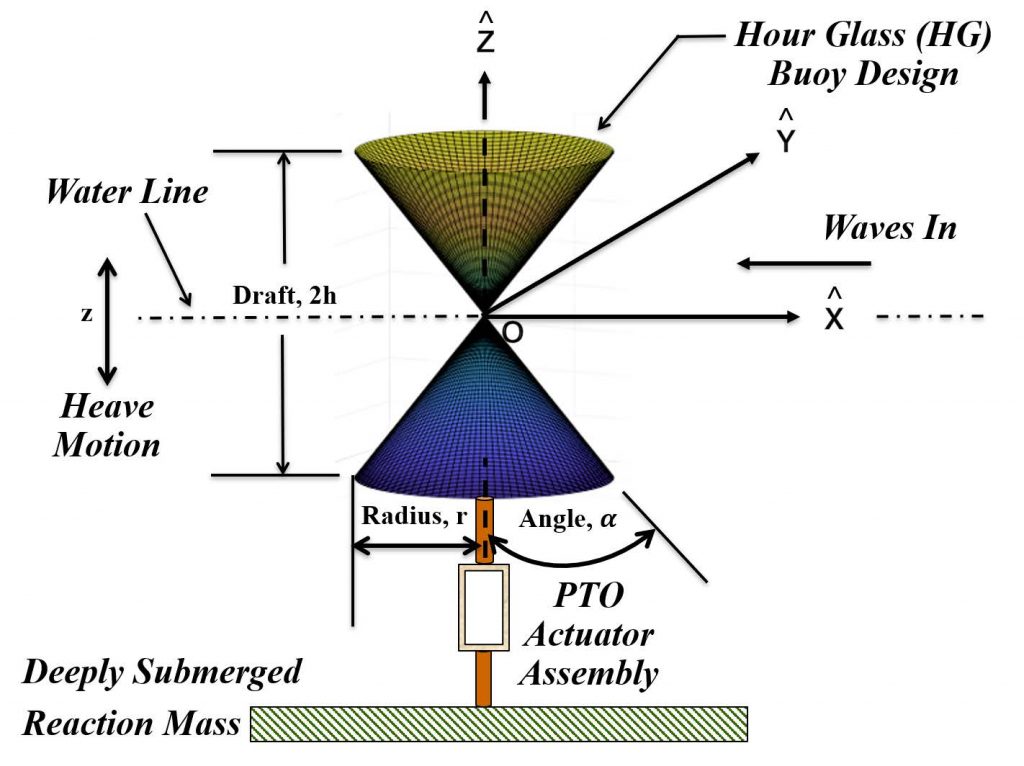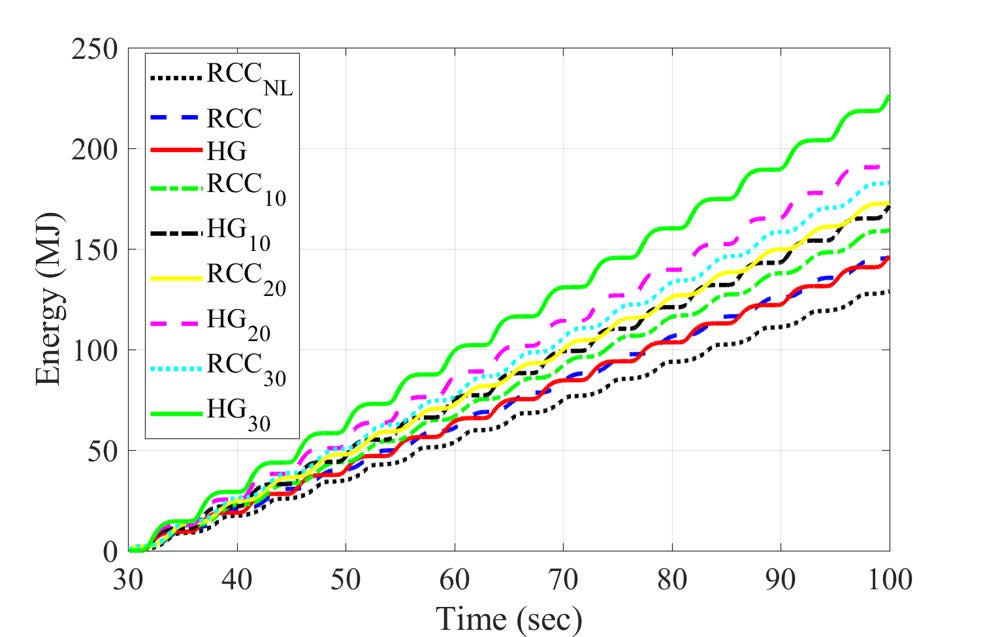Nonlinear Hourglass Buoy Design for Wave Energy Converters (WECs)
This nonlinear hourglass buoy design optimizes power absorption in multi-resonant conditions and eliminates reactive power at the buoy level for more efficient wave energy converters (WECs)
Ocean waves have the potential to deliver more available energy per square meter than other renewable sources such as solar or wind. Many different wave energy converter (WEC) devices and control strategies for interacting with and absorbing the natural energy from waves have been proposed. Conventional WEC devices generate power over a small band of the full wave energy spectrum, but when a WEC is off-resonance with the impacting waves, it operates much less efficiently. In order to compete with other energy technologies on the market, WECs must be capable of operating and energy capture over the full range of sea states, which includes highly nonlinear conditions during power production mode.
Researchers at Sandia National Laboratories have developed a nonlinear control technique that capitalizes on a WEC hourglass geometric buoy design and a complex conjugate control (C3) strategy to optimize power absorption in multi-resonant conditions. The hourglass buoy design operates in the heave motion of the wave or as a single degree-of-freedom and demonstrates favorable performance over existing solutions. The unique interaction between the hourglass buoy geometry and an ocean wave creates a nonlinear cubic storage effect that produces actual energy storage or reactive power during operation. Because reactive power and energy storage system (ESS) requirements are inherently embedded in the nonlinear buoy geometry, it requires only simple rate feedback control and no energy storage or power electronics. By focusing on achieving multi-resonance, this development could increase WEC power generation, enable reductions in both size and weight, and could potentially make modern WEC designs highly efficient options for power generation.
- Improved energy capture for point absorber WECs in off-resonant conditions, reducing size, weight, and economic return
- Eliminates reactive power and power electronics at the buoy level
- Substantial cost reductions in new and existing systems
- Combined features may support location independent WEC deployment
- Renewable energy
- Marine/maritime


SD# 15091
Published6/23/2020
Last Updated6/23/2020